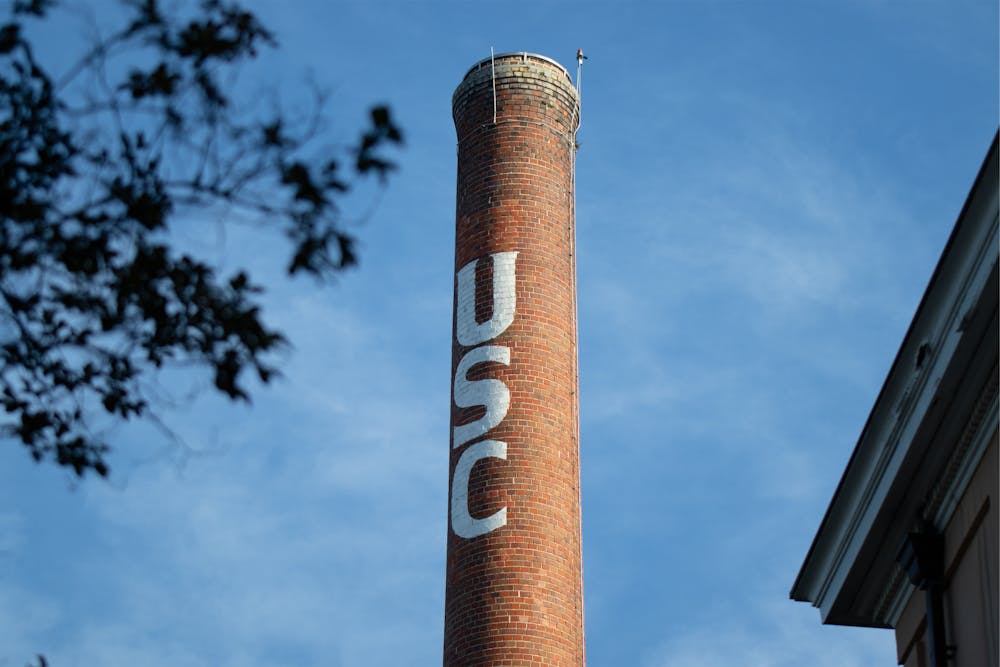USC has committed to accepting the top 10% of all South Carolina high school graduating classes starting in the fall 2024 admissions cycle.
The application opened Aug. 1, and students currently applying are eligible.
The new policy was a culmination of conversations among senior leadership from the president's cabinet. The policy hopes to increase applicants from rural parts of the state and attract students who may not feel they are admissible to USC, said Elizabeth Orehovec, the assistant vice president for enrollment management and executive director of undergraduate admissions.
Of rural high school students, 59% attend college compared to 67% of suburban students, according to the policy institute Lumina Foundation.
While there are students from every county in the state at USC, some have as few as four or five students attending. The change in admissions is aimed at providing more opportunities to eligible students from those areas.
USC has an obligation to educate South Carolina students from all counties as the state's flagship university, said Donna Arnett, the executive vice president for academic affairs and provost.
Joel Samuels, dean of the College of Arts and Sciences, said the policy shows the university's commitment to the state.
"I think one of the most important big picture things is our role as a flagship university in serving the state of South Carolina," Samuels said. "This is yet another example of the university leading the state."

This change to admissions has been considered for “a number of years,” Orehovec said.
The university has been examining admissions data throughout the pandemic that shows the top 10% of high schools are already being admitted.
"When COVID happened, we went test-optional," Orehovec said. "We have had the opportunity to admit students and enroll students who did not submit standardized test scores, and so we've been able to see that those students are doing very well at the university. We've been able to look at how students in the top 10% are doing at the university, and we know that they're doing really, really well even if they're not submitting test scores."
The change in admissions will not alter the application process, Orehovec said, and students will still be required to submit regular materials, such as transcripts and essays. Admissions decisions will also go out at normal times with early action in December and regular acceptance in March.
While the policy is well received among university officials, there are concerns surrounding student retention. Successfully moving from one's first to second year is an important indicator of graduation and students who come from rural areas and don't know anyone at the school may be less likely to continue, Arnett said. Arnett also said she is concerned about these students feeling isolated and being unable to graduate in four years.
"When you come and you don't have friends that you grew up with that come with you, that sense of isolation or lack of belonging is one of the things we worry about," Arnett said.
Expansion of various Living and Learning Communities is one way the university is attempting to solve this problem, as well as giving support to first generation students or those unexposed to college. These communities have a high positive correlation to graduation rates and student retention, according to Arnett. There are currently six Living and Learning Communities on campus, and Arnett said she hopes to launch a community for first generation students soon.
"The goal is to create a community within this large community, so you would live and, ideally, you would have classes with the others in your dorm, have activities with a faculty member from that Living Learning Community," Arnett said. "Those co-curricular activities that help you grow and mature in your academic journey."
The hope is that this policy will give more educational access to students in the state and continue to strengthen the university's student body, Arnett said.
"One of the biggest goals is just making sure that the students who are in the state of South Carolina, who are graduating in the top 10% of their high school class, know that we want them at South Carolina," Orehovec said. "Those are some of the best and brightest students in the state, and we really think that they would be an enhancement to our community."

